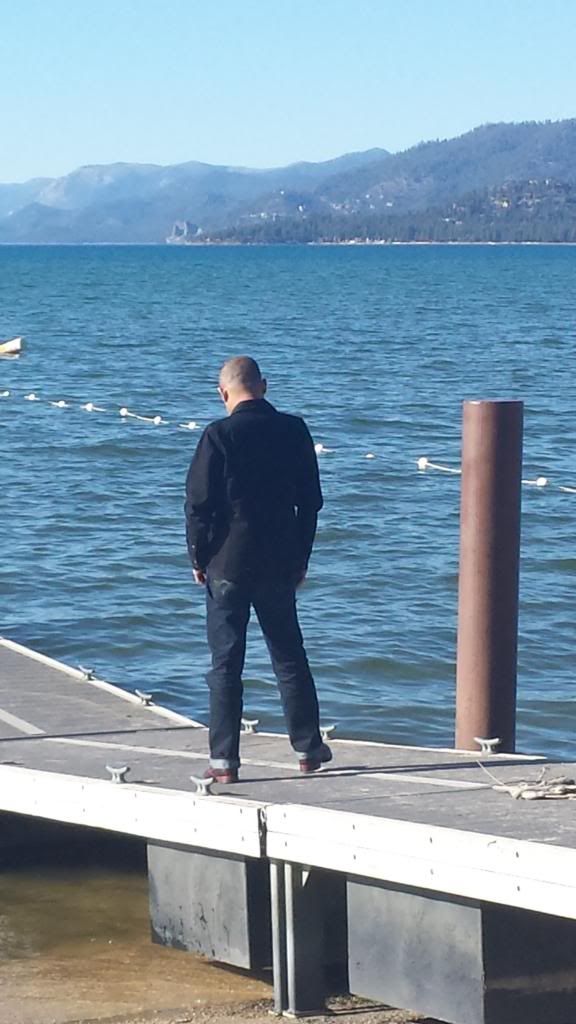The Flat Head
-
not a problem wade

@Kyle@TFH:
Part Three: The First Sewing House
Our next stop takes us to the first sewing house. We were greeted by a large, barking dog; apparently, the sewer’s daughter is involved in breeding dogs. I kept my distance.
Here, a single individual runs the entire sewing operation. She helms an old single-needle Mitsubishi sewing machine, and her task is to sew the back pockets, from start to finish.
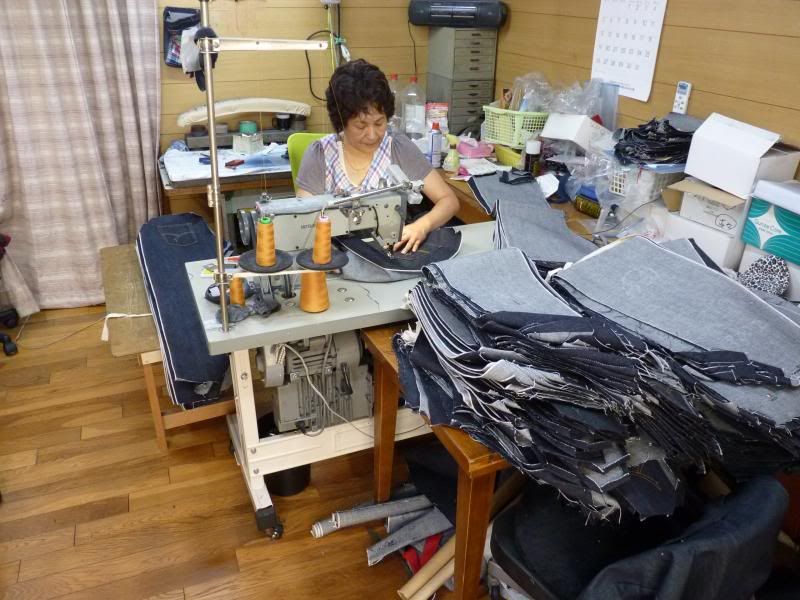
First, she sews the pocket shape from a blank piece of denim, folding the edges and riveting it to the jeans. This is actually the easy part.
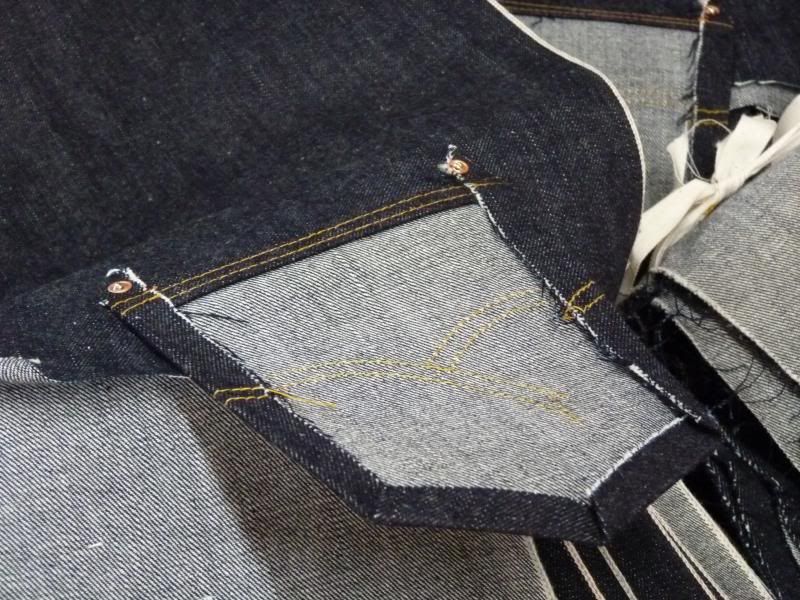
She sews the arcuates, too; though she uses a chalk pattern for tracing, the actual arcuate stitch is sewn by hand. Compare this to many brands, which stitch their arcuates using an automatic machine that creates the entire design at once.
After the arcs, the pocket is riveted. Once a sufficiently large stack of half-attached pockets has accumulated, she does the most difficult part of the process: stitching the pockets to the leg. This looks deceptively easy, but in fact it takes a high level of skill to make the narrow stitch of the back pockets without contacting the pocket rivets.
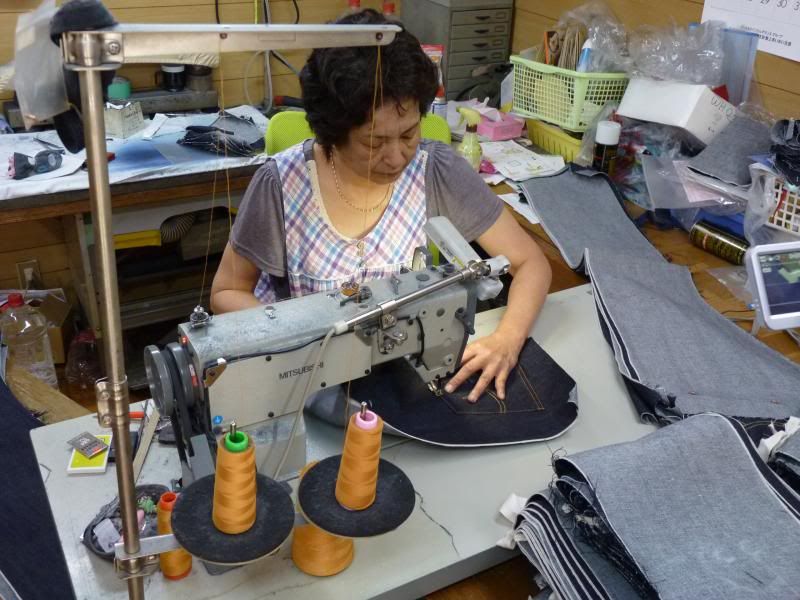
Once we finished watching, I told her that while she might have a thankless job if she worked in some factory, denim enthusiasts are the kind of people who consciously appreciate the kind of detailed effort that goes into these steps of the sewing process. She seemed quite grateful and flattered that we thought so highly of her work.
Next time we’ll venture to the main cutting sewing house, where most of the sewing takes place!
-
@Kyle@TFH:
Part Four: The Second Sewing House
Our next stop was a small house at the top of a steep hill; this couple raises fish in addition to crafting denim, but perhaps more of interest to us, they had a small van completely packed to the brim with Flat Head denim, waiting to be sewn together.
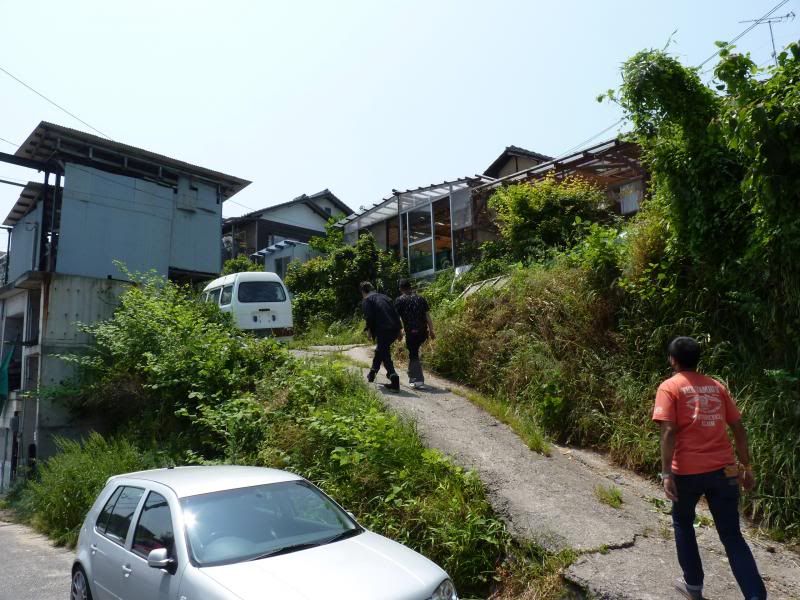
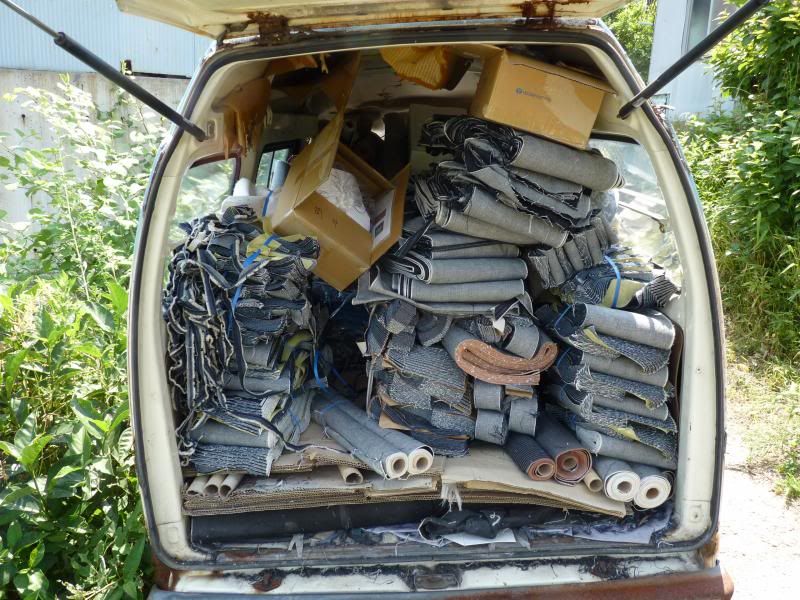
This is arguably the most important stop of our tour; it’s certainly where the most sewing takes place. The couple who run the second sewing house have a large collection of vintage sewing machines by Mitsubishi, Brother, and of course Union Special.
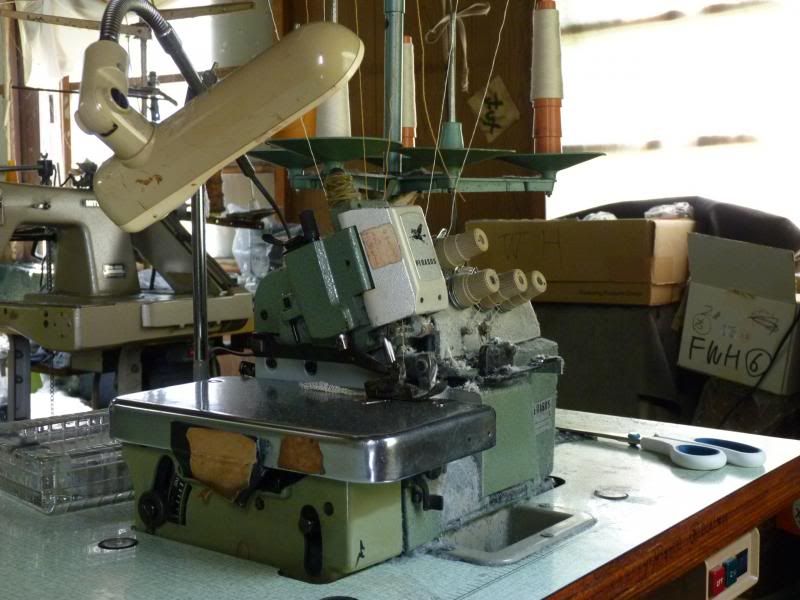
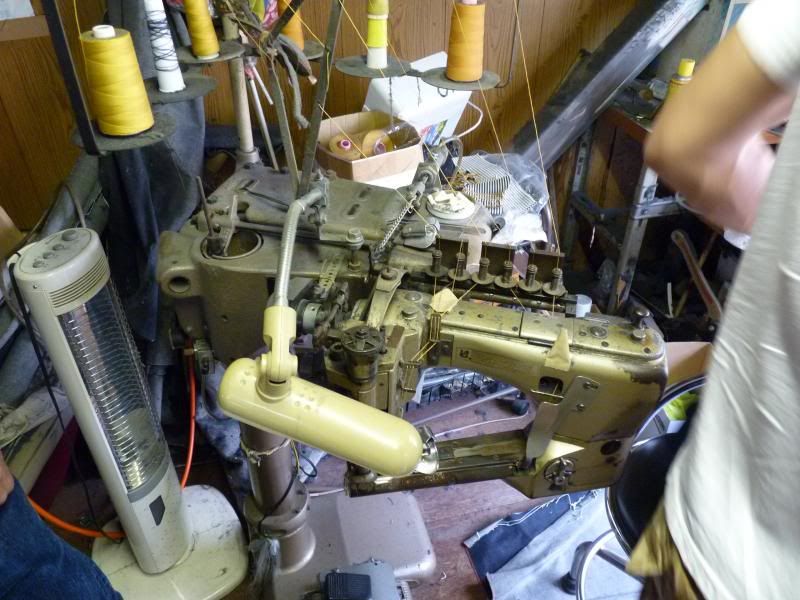
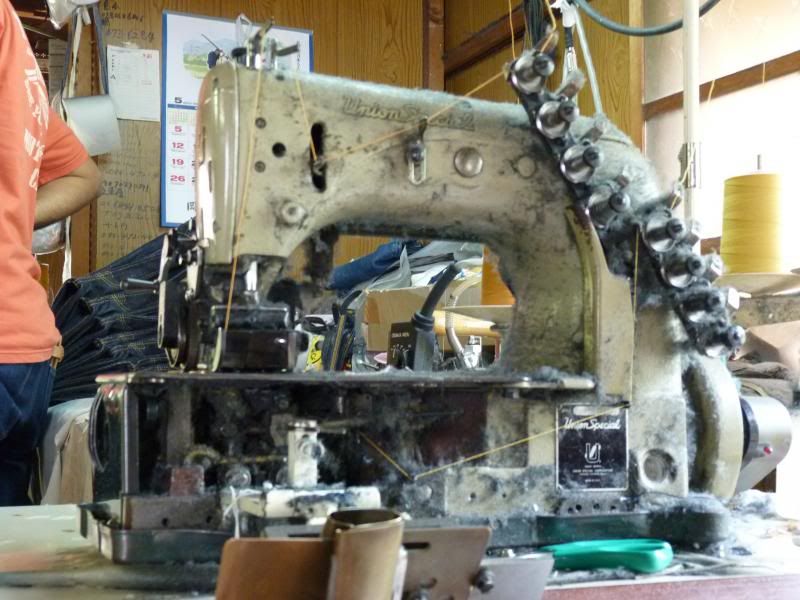
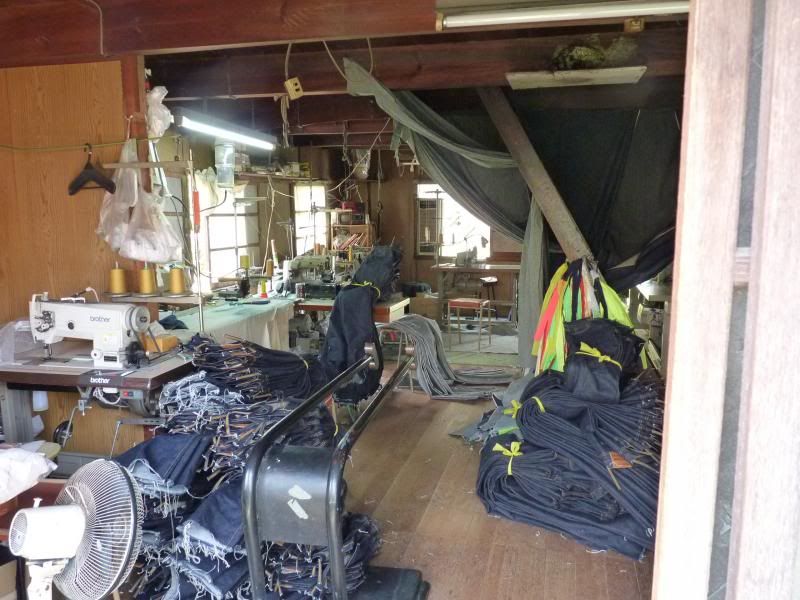
When we dropped in, they were hard at work on special 20 oz. collaboration jeans. These are apparently a real headache to sew with all-cotton thread on vintage machines, and these are the very last 20 oz. jeans that Flat Head is going to make. The man is folding the waistband and chainstitching the bottom part, which is a slow process requiring many adjustments during sewing.
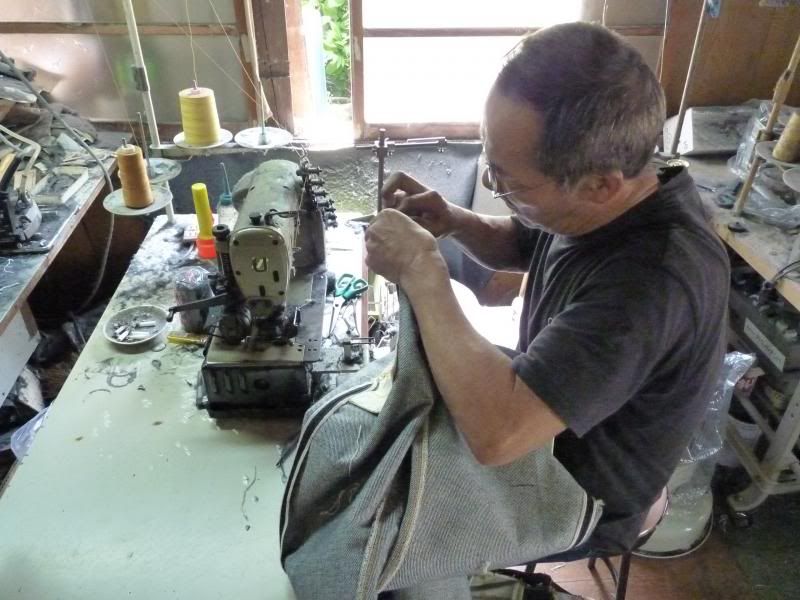
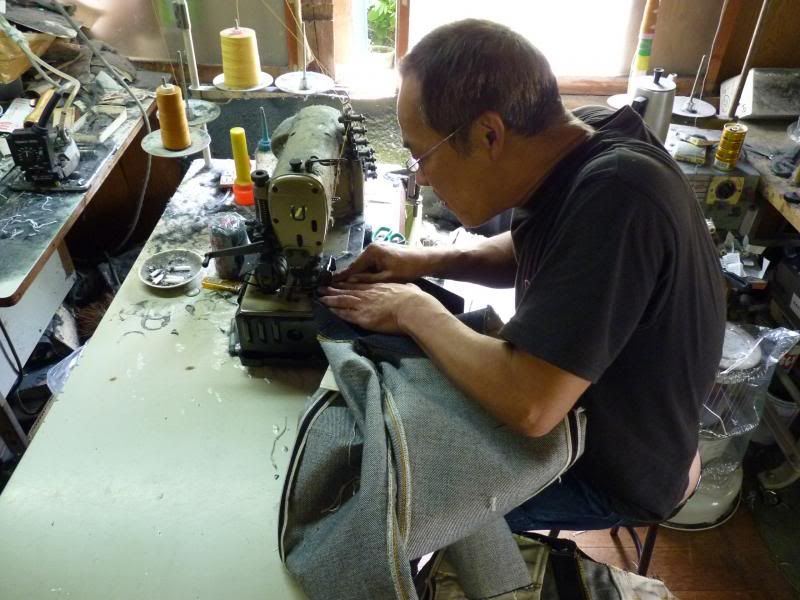

The woman is finishing up the waistband with a single-stitch machine. This is also much slower than you’d expect, because the belt loops are sewn into the waistband as well. The conventional method is to sew the entire waistband and then attach the belt loops, but instead Flat Head jeans have the belt loops sewn in at this stage for additional strength. She also sews the leather patch with the same single stitch; it’s not attached separately.

As you can probably see, this is not the fastest way to make jeans. But because all of Flat Head’s jeans are sewn here (and in one other house factory with the same machinery, which was too far away for us to visit at this time), it allows for a personal touch that’s absent from mass-produced jeans, and gives the workers greater control over processes involved. More importantly, it lets workers specialize in a few select areas of expertise, in a less distracting environment than a large factory.
Some people claim that the idea of a uniquely Japanese work ethic is hyperbole, but it makes sense once you see the careful sewing processes in person. Next time we’ll visit the last stop of the tour, where the jeans reach their final form!
-
I really dig the evo on the DnD's painted buttons. Though I look forward to all the paint being gone.

-
-
Nice. And nice kicks too

-
Maybe I was wrong. Those look great!
-
Wow Finn, perfect fit. Those tees look great!
-
I have never seen better tees than TFH. The neck reinforcement is so sturdy and the cotton so thick and soft.
-
Rafa, the tees look great on you.
-
Hey Finn666, what size are you in IH western / workshirt / Ts? Those FH t's looked good on you, but I am wary of FH sizing.
-
thanks a lot Danny! now i only need to find them again…

how ya doing mankarat?
@Omega:
Hey Finn666, what size are you in IH western / workshirt / Ts? Those FH t's looked good on you, but I am wary of FH sizing.
hey mate. i´m a L or XL in IH shirts and a L in the old IH t´s…pre-ordered two of the new t´s in M so as soon as i get those i´ll let you know!
-
Wearing the other form of sartorial crack as I discuss the weather with John Deere (my office is in one of his old factories).

-
Super cool
-


